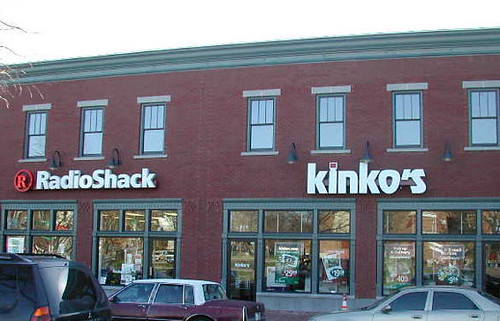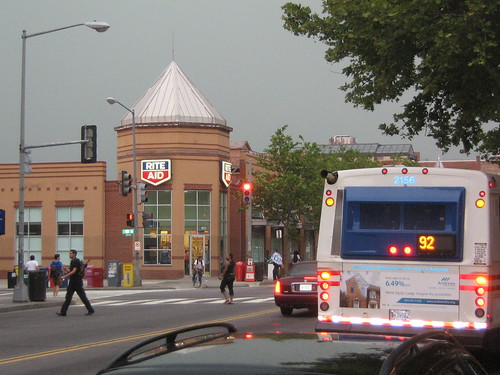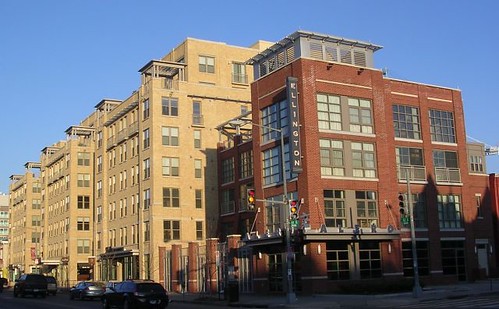An example of how the revitalization process takes decades and many phases
According to the Washington Business Journal in "JBG proposes eight-story mixed-use building for 13th and U," the developer JBG Companies proposes to redevelop a one story strip of stores on U Street NW, anchored by a Rite Aid, into an 8 story residential building with ground floor retail.
For those of us around when the strip was constructed in the early 1990s, it was frustrating because to us, why would you build a one story set of buildings immediately across from a Metro Station? It made a joke of the term "transit oriented development," which probably wasn't a term in use back then anyway, but is one of many examples of why it took until after 2000 before you began to see a direct positive relationship between transit proximity and economic development in many DC neighborhoods other than Downtown.
It's not unlike the argument at Eastern Market Metro Plaza, where the developer of the building with the Radio Shack and Kinkos (now FedEx Office) refused to build a real two story building, but acquiesced to a point and constructed a fake second story.

The Rite Aid anchored strip development on U Street kept the land from being vacant, which was a positive, but that's all it did as the lack of the project doing much other than occupying the land didn't contribute much to additional neighborhood improvement to a significant degree. (Not unlike how the Reeves Center "used up the land" but didn't spur any additional development in the 14th and U Streets corridors. See "The Reeves Center Myth Revisited" from 2006)

U Street Rite Aid Flickr photo by shindoverse.
That didn't come until the creation of the Ellington apartment building.

But you could argue that revitalization is a process (for example, I argue that plans aren't endpoints, but beginning points) and that the Rite Aid shopping center was a bit better than nothing and more importantly not a permanent kind of development that precluded more intensive redevelopment down the road.
But the difference between the Rite Aid development and the Ellington development is instructive. The Rite Aid was development and added services to the corridor, but it wasn't so great that it had any other positive impact or spillover benefit on other development. On the other hand, the Ellington provided significant improvement because of its quality, which in turn spurred other positive development.
There is no question that the proposed JBG development (rendering on the left) is incredibly attractive by comparison to the Rite Aid and adjoining strip of commercial, much of which has not been very successful over the years.
Labels: real estate development, transit oriented development, urban design/placemaking, urban revitalization




1 Comments:
Really informative blog article.Really thank you!
Post a Comment
<< Home